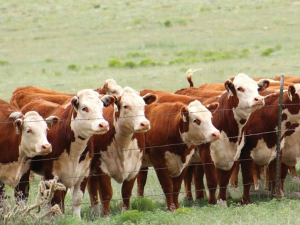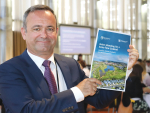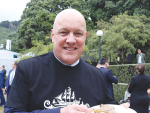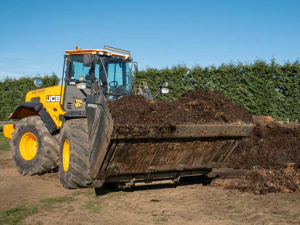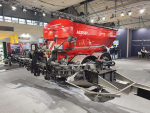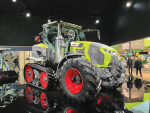These were the takehome messages at a recent B+LNZ heifer mating workshop in North Canterbury with presenters Simon Lee, general manager of Southland’s 71,000ha Glenary Station, and Amy Hoogenboom, New Zealand’s beef genetics manager for Zoetis.
Lee has implemented the practice of mating yearling heifers on three properties he has managed, the most recent being Glenary Station.
Prior to talking on the general manager’s role at Glenary, Lee managed Mendip Hills in North Canterbury for 18 years. During his tenure, the hill country farm was one of the hosts of Beef + Lamb New Zealand’s Beef Progeny Test.
Simon told farmers that planning and systems were critical for successfully mating yearling heifers.
“It’s all about planning and systems, if you have the culture right you can do anything.”
On Glenary, which runs 3000 breeding cows including heifers, it was a matter of building up the number of heifers they were mating over three years. This spring, they will be calving 500 R2 heifers.
The first year they mated 248 yearling heifers, the second year they increased the number to 470 and last year 540 yearlings went to the Angus bull.
“If we weren’t calving heifers, that would be 500 less progeny born in spring, so it’s a big opportunity – but you can’t let it fail,” says Lee.
To ensure they didn’t fail, he says they have timelines to ensure they build adequate pasture covers for calving heifers and are diligent about feed planning.
Their planning starts back at weaning when Lee says they go through 1200 heifer calves assessing their phenotype and temperament.
“It takes all day, but it’s so worthwhile doing.”
They whittle their replacements down to 540 heifers which are put to a yearling Angus bull weighing 340-350kg.
He says a robust animal health programme is also vital for a successful heifer mating programme and for him, the non-negotiables are treatments for copper, leptospirosis, BVD and selenium.
He believes the impact on leptospirosis is often under-rated in breeding cow herds, especially on hill country where wild deer are present.
Lee, who has a philosophy of feeding stock as well as possible all year round, says it is the Body Condition Score of heifers at re-mating that is the biggest determinant of success.
Since implementing the practice, they have achieved an in-calf rate of 92 percent in their yearling heifers and 94-96 percent in their second mating.
“By us feeding the way we do, we get better conception rates in our heifers than we do in the mixed-age cows, although the cows are on harder country.”
Once in-calf, the heifers are run on easy rolling country and are then calved behind a wire.
Lee says the heifers are calving at the same time they are lambing 28,000 ewes on paddock country.
To ensure all stock classes get the care they need, they have one person dedicated to looking after the calving heifers and 14 staff on a six week, eight-days -on-and-three-off roster looking after the lambing ewes.
Selecting Sires
Simon Lee selects yearling Angus bulls for heifer mating, particularly focusing on their EBVs for calving ease.
The bulls are run with heifers at a ratio of 1:24 or 1:25 for two cycles. The heifers are run in mobs of 80-100 over mating and the bulls are swapped around after each cycle.
None of the resulting heifer calves are retained, so these bulls are used as terminal sires.
“The heifer’s heifers are not retained, they all become trading heifers. I’m just after a live calf.”
Body Condition Score
Amy Hoogenboom said weight at mating is the number one factor that determines the success of a heifer mating programme.
The minimum mating weight should be 60 percent of the mature cow weight.
“Weight is one of the most significant factors influencing when a heifer reaches puberty and begins to cycle.”
Although Hoogenboom says weight at puberty and weight at mating are not the same thing, she disagrees with the 300kg number that is often used when it comes to minimum heifer mating weights.
“It is too light, most modern cow herds average more than 500kg mature weight, go for the 60 percent of the mature cow weight, not just a round figure. The industry benchmark for a critical mating weight should be closer to 330-340kg.”
Heifers at that critical weight are more likely to conceive in the first cycle and their calves are likely to be heavier as a result of this.
They are also more likely to have success at their second mating.
When re-breeding after their first calving, heifers need to be at 80% percent of mature cow weight, or a Body Condition Score of 6-7 at mating - that is, they need to be a BCS 6-7 at the beginning of mating, not rising to this condition during mating. But Hoogenboom says research by both B+LNZ and others shows there is a no advantage to a female’s fertility when she has a BCS of greater than 7.





